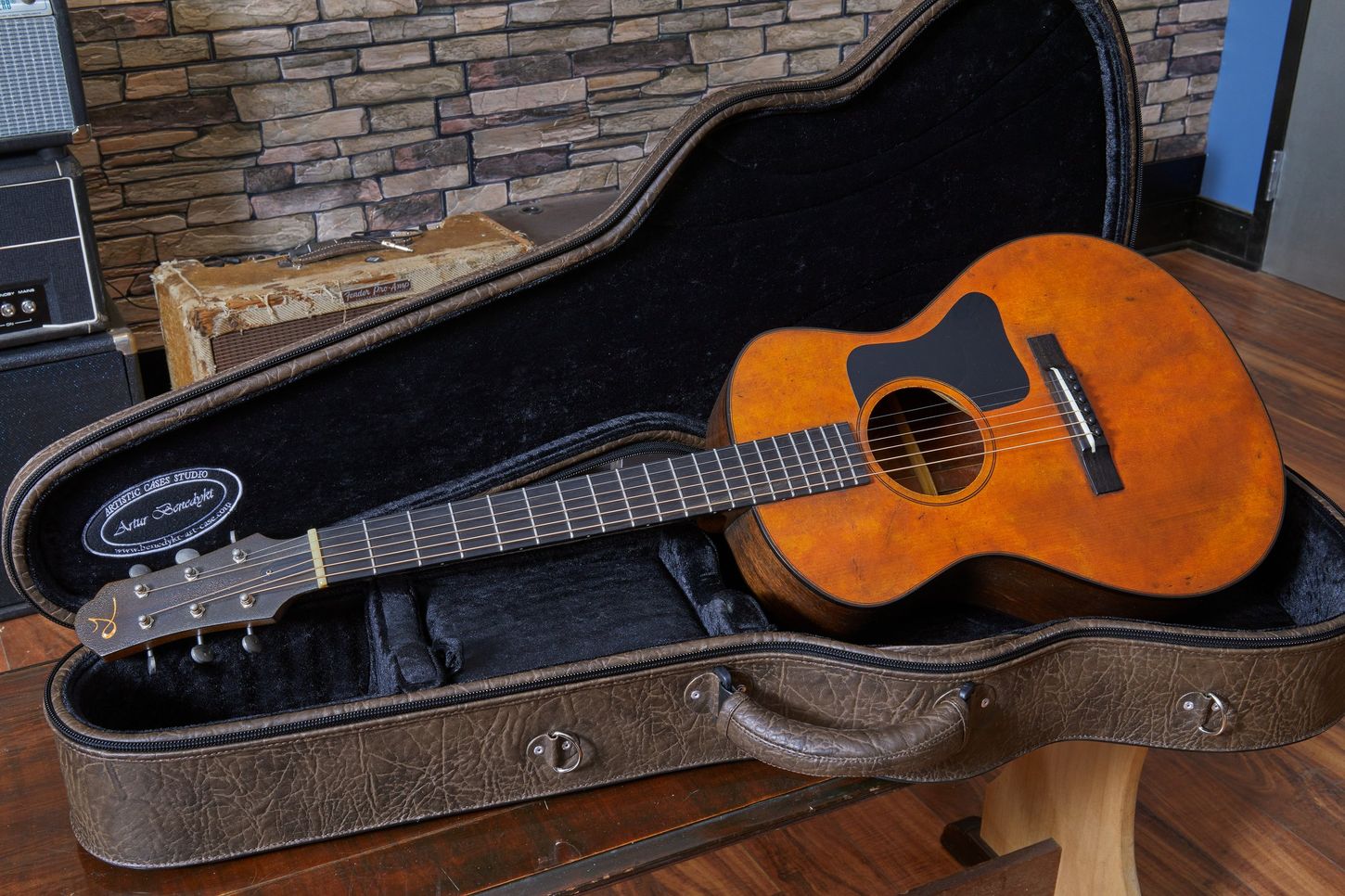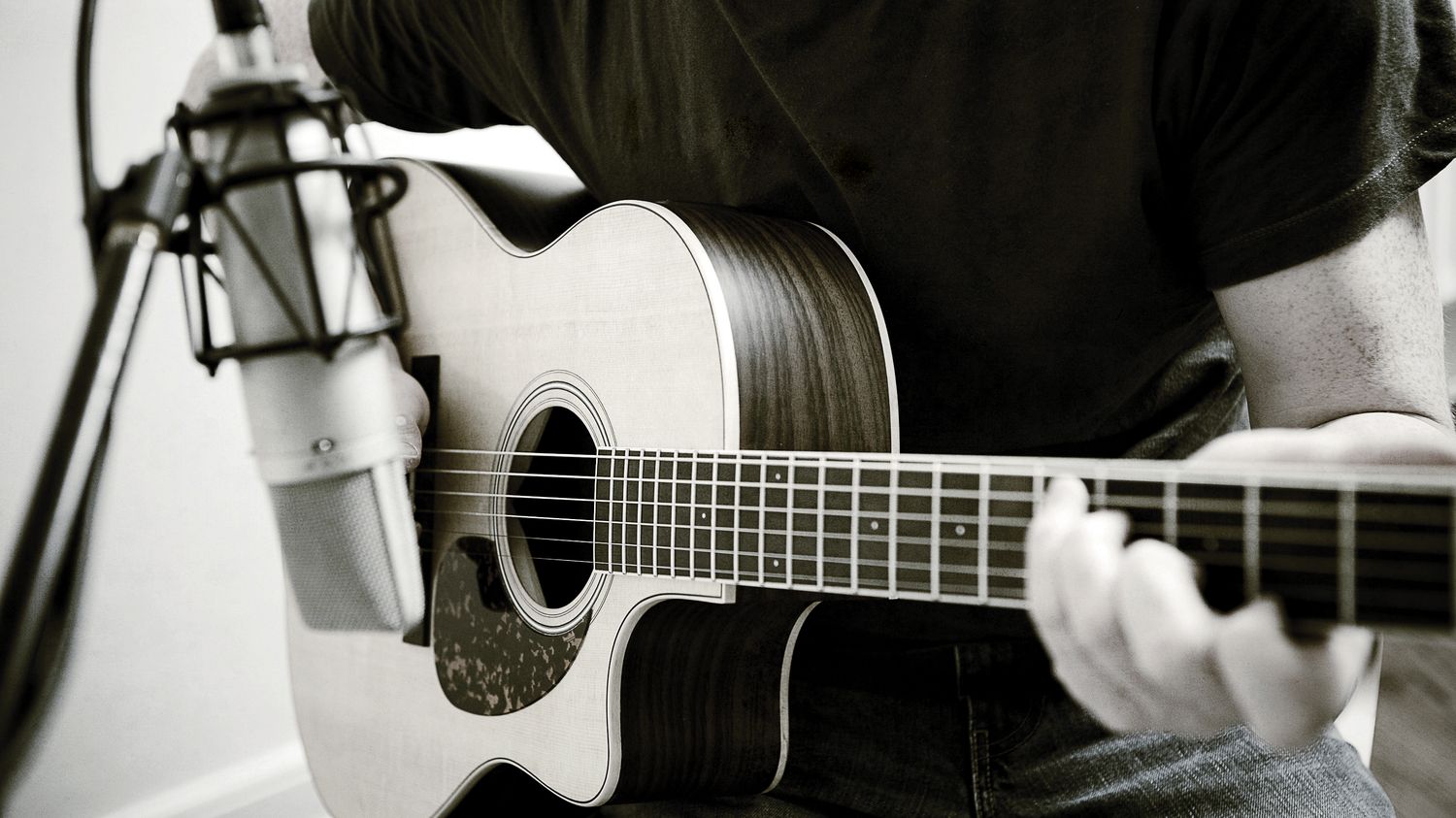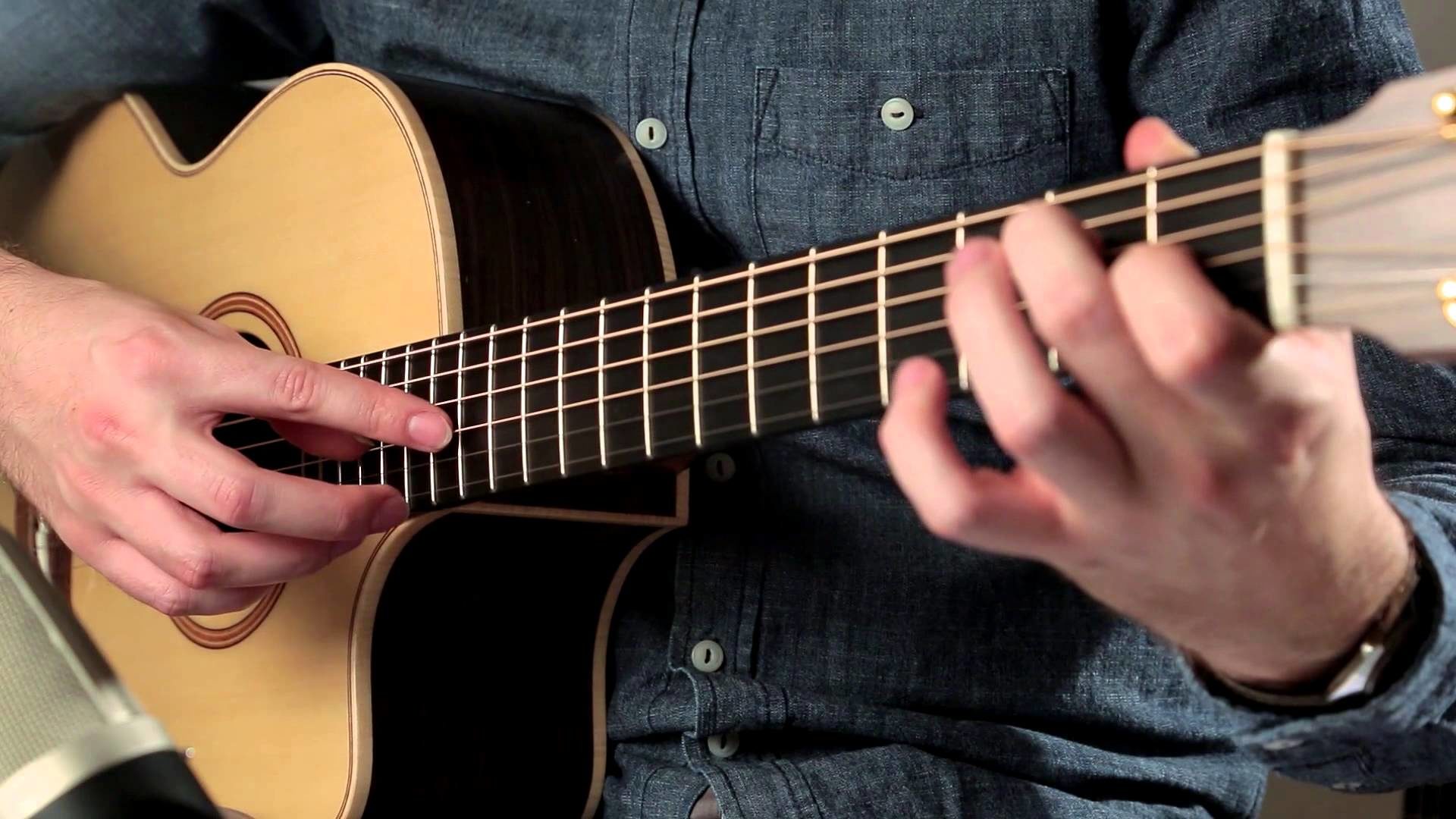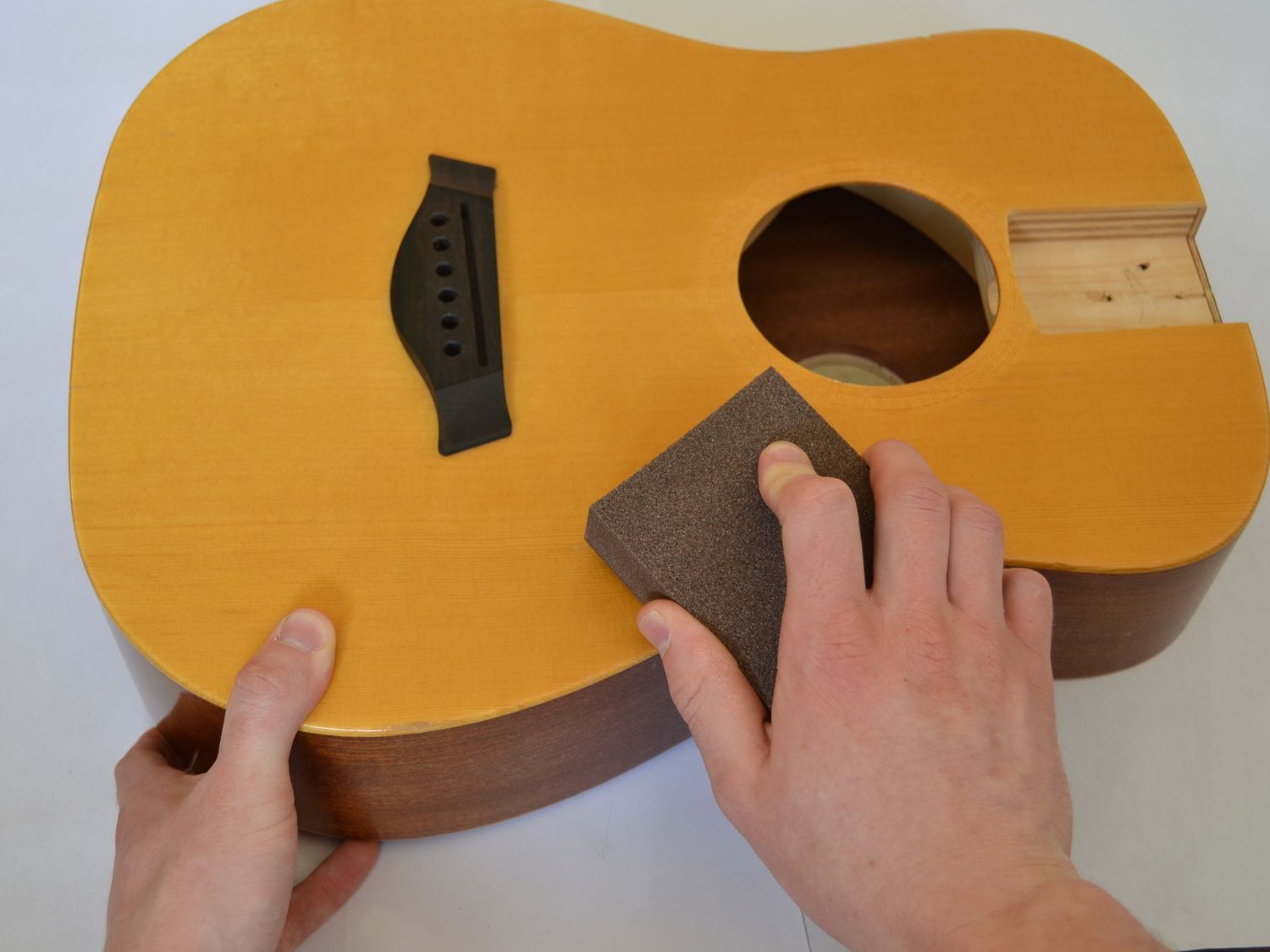Home>Production & Technology>Acoustic>How To Strum Acoustic Guitar


Acoustic
How To Strum Acoustic Guitar
Published: March 11, 2024
Learn how to strum your acoustic guitar like a pro with our step-by-step guide. Master the art of acoustic guitar strumming and elevate your playing skills.
(Many of the links in this article redirect to a specific reviewed product. Your purchase of these products through affiliate links helps to generate commission for AudioLover.com, at no extra cost. Learn more)
Table of Contents
Introduction
Learning to strum an acoustic guitar is an essential skill for any aspiring guitarist. Whether you're a beginner or have been playing for a while, mastering the art of strumming can significantly enhance your musical expression and enjoyment. The rhythmic and melodic interplay created by strumming patterns adds depth and emotion to your playing, making it a fundamental aspect of acoustic guitar performance.
In this comprehensive guide, we will delve into the intricacies of strumming an acoustic guitar, covering everything from choosing the right instrument to refining your strumming techniques. By the end of this article, you will have a solid understanding of the foundational principles of acoustic guitar strumming and be equipped with valuable tips to elevate your playing to the next level.
Whether you aspire to strum along to your favorite songs, write your own music, or perform for an audience, the knowledge and skills you gain from this guide will serve as a solid foundation for your musical journey. So, grab your acoustic guitar, and let's embark on this enriching exploration of strumming techniques and musical expression.
Choosing the Right Guitar
Selecting the right acoustic guitar is a crucial first step in your journey to mastering strumming techniques. The type of guitar you choose can significantly impact your playing experience and overall sound. Here are essential factors to consider when choosing the perfect acoustic guitar:
-
Body Type: Acoustic guitars come in various body shapes, each offering distinct tonal qualities. The most common shapes include dreadnought, concert, and parlor. Dreadnought guitars are known for their robust sound and are ideal for strumming chords with power and resonance. Concert guitars are slightly smaller and produce a balanced tone, making them suitable for a wide range of playing styles. Parlor guitars, with their compact size, offer a warm and intimate sound, making them perfect for fingerstyle playing. Consider the body type that aligns with your preferred playing style and sound preferences.
-
Tonewood: The choice of tonewood significantly influences the guitar's tone. Spruce, cedar, mahogany, and rosewood are popular tonewoods used in acoustic guitars, each contributing unique sonic characteristics. Spruce is renowned for its bright and articulate sound, making it well-suited for strumming and flatpicking. Cedar offers a warmer and more nuanced tone, ideal for fingerstyle playing. Mahogany imparts a rich, midrange-focused sound, while rosewood delivers a lush, resonant tone. Understanding the tonal properties of different woods can guide you in selecting a guitar that complements your strumming style.
-
Neck Profile and Action: The neck profile and action (string height) of a guitar significantly impact playability. A comfortable neck profile that fits your hand size and playing technique can enhance your strumming experience. Additionally, a suitable action ensures that the strings are easy to press down, facilitating smooth chord transitions and effortless strumming.
-
Budget and Quality: While it's essential to consider your budget, investing in a quality acoustic guitar can greatly influence your strumming journey. High-quality guitars are crafted with precision, offering superior tonal clarity, resonance, and durability. Prioritize finding a balance between affordability and quality to ensure a rewarding playing experience.
By carefully considering these factors and, if possible, trying out different guitars before making a decision, you can select an acoustic guitar that resonates with your musical aspirations and empowers you to explore the art of strumming with confidence and joy.
Understanding Basic Strumming Patterns
Mastering basic strumming patterns is fundamental to becoming proficient in playing the acoustic guitar. These patterns form the rhythmic foundation of countless songs across various genres, making them essential for any aspiring guitarist. By understanding and internalizing these patterns, you can unlock a world of musical possibilities and elevate your playing to new heights.
Downward Strumming
The most fundamental strumming pattern involves downward strums, where the pick or fingers move from the top strings to the bottom strings. This simple yet crucial technique forms the basis for many popular songs and serves as an excellent starting point for beginners. By focusing on downward strumming, you can develop a strong sense of rhythm and timing, laying a solid groundwork for more complex patterns.
Upward Strumming
Incorporating upward strums into your playing adds depth and versatility to your strumming repertoire. Upward strumming involves moving the pick or fingers from the bottom strings to the top strings, creating a complementary motion to downward strums. By integrating upward strums with downward strums, you can achieve a fuller and more dynamic sound, enhancing the overall musical expression of your playing.
Strumming Patterns
Beyond individual downward and upward strums, various strumming patterns combine these motions to create rhythmic textures that enhance the musicality of your performance. Common patterns include the basic down-up strum, which alternates between downward and upward motions, and the popular "D-DU-UD" pattern, where "D" represents a downward strum and "U" represents an upward strum. These patterns form the backbone of countless songs and provide a versatile framework for expressing different musical styles and emotions.
Embracing Dynamics
Understanding basic strumming patterns also involves embracing dynamics, which refers to the variation in volume and intensity throughout a song. By mastering dynamics, you can infuse your playing with subtle nuances, such as accenting certain beats or strums to create a more expressive and engaging performance. Dynamics add depth and emotion to your strumming, allowing you to convey the mood and energy of a song with precision and artistry.
Practice and Progress
While understanding basic strumming patterns is essential, consistent practice is the key to internalizing these techniques and incorporating them seamlessly into your playing. Dedicate time to practicing various strumming patterns, focusing on precision, rhythm, and fluidity. As you progress, you'll notice an improvement in your ability to execute different patterns with confidence and musicality, laying the groundwork for more advanced strumming techniques.
By understanding and mastering basic strumming patterns, you'll develop a strong rhythmic foundation and expand your musical vocabulary, empowering you to explore a diverse range of songs and styles with creativity and flair. As you continue your musical journey, these foundational patterns will serve as a springboard for further growth and artistic expression, enriching your experience as an acoustic guitarist.
Holding the Guitar Properly
Properly holding the guitar is essential for achieving comfort, control, and optimal sound production while strumming. The way you position the guitar influences your posture, hand placement, and overall playing experience. Whether you're sitting or standing, the following guidelines will help you maintain a correct and ergonomic posture while holding the acoustic guitar.
Sitting Position
When sitting, place the guitar on your dominant leg, ensuring that the instrument's body rests against your torso. This position allows for better stability and facilitates easy access to the fretboard and strumming area. Keep your back straight but relaxed, avoiding slouching or leaning too far forward. By maintaining good posture, you can prevent muscle strain and play with greater ease and endurance.
Arm Placement
Position your strumming arm comfortably over the guitar's body, allowing your hand to reach the soundhole and strings effortlessly. Your forearm should rest lightly on the top of the guitar, providing support and stability while allowing for fluid strumming motions. Avoid tensing your arm or gripping the guitar too tightly, as this can impede your strumming technique and lead to discomfort during extended playing sessions.
Fretting Hand Position
For the hand that frets the chords, ensure that your wrist remains relatively straight to facilitate smooth chord transitions and minimize strain. Place your thumb behind the neck of the guitar, providing support and leverage for fretting while allowing your fingers to move freely across the fretboard. Maintaining a relaxed and natural hand position enhances your dexterity and precision when forming chords and executing intricate fretting patterns.
Standing Position
When standing while playing the acoustic guitar, use a guitar strap to support the instrument's weight and maintain a comfortable playing position. Adjust the strap length to position the guitar at a height that allows for easy access to the fretboard and comfortable strumming. Whether performing on stage or practicing at home, a well-adjusted guitar strap promotes mobility and enables you to focus on your strumming technique without the distraction of an awkward or unstable playing position.
Overall Comfort and Alignment
Prioritize comfort and alignment when holding the guitar, as these factors directly impact your strumming proficiency and overall playing enjoyment. Pay attention to your body's natural alignment, ensuring that your shoulders, arms, and hands are relaxed and free from unnecessary tension. By maintaining a balanced and comfortable posture, you can strum with greater fluidity, control, and musical expression, enhancing your playing experience and promoting long-term physical well-being.
By adhering to these guidelines and consistently practicing while maintaining proper posture and hand placement, you can cultivate a solid foundation for acoustic guitar strumming. Embracing a correct and ergonomic playing position not only enhances your technical proficiency but also contributes to a more enjoyable and sustainable musical journey. As you integrate these principles into your playing routine, you'll find that holding the guitar properly becomes second nature, empowering you to strum with confidence and creativity.
Using a Pick or Your Fingers
The choice between using a pick or your fingers to strum the acoustic guitar is a decision that can significantly impact your playing style and sonic characteristics. Both approaches offer distinct advantages and nuances, and understanding the differences between them can enrich your musical expression and versatility as a guitarist.
Using a Pick
Using a pick, also known as a plectrum, provides a consistent and defined attack on the strings, resulting in a bright and percussive sound. Picks are available in various materials, such as plastic, nylon, and metal, each offering unique tonal qualities and flexibility. When strumming with a pick, you can achieve a crisp and articulate sound, making it well-suited for genres that require a pronounced and rhythmic strumming approach, such as rock, pop, and country music. Additionally, using a pick allows for precise control over individual string articulation, enabling dynamic playing and intricate picking patterns.
Using Your Fingers
Opting to strum with your fingers offers a more nuanced and expressive tonal palette, allowing for greater subtlety and variation in sound production. The natural warmth and depth produced by fingerstyle strumming can evoke a rich and emotive quality, making it ideal for folk, classical, and acoustic singer-songwriter genres. By using your fingers, you can explore intricate fingerpicking patterns, create melodic arpeggios, and seamlessly transition between chords with fluidity and grace. The tactile connection between your fingers and the strings adds a layer of intimacy and sensitivity to your playing, enabling you to convey intricate musical nuances with finesse and emotion.
Versatility and Adaptability
While the choice between using a pick or your fingers may initially seem like a binary decision, many guitarists embrace a hybrid approach that combines both techniques. This hybrid style offers a versatile range of tonal possibilities, allowing you to switch between using a pick for rhythmic power and employing your fingers for delicate melodic passages. By mastering both techniques, you can adapt your playing to suit a diverse array of musical contexts, from energetic strumming to delicate fingerstyle arrangements, enhancing your versatility as a guitarist and broadening your creative horizons.
Personal Preference and Exploration
Ultimately, the decision to use a pick or your fingers is a matter of personal preference and artistic exploration. Experimenting with different approaches can lead to new discoveries and inspire innovative playing styles. Whether you gravitate towards the precision of a pick or the tactile expressiveness of fingerstyle playing, embracing both techniques can expand your musical repertoire and deepen your connection to the instrument. As you explore the sonic possibilities offered by using a pick, your fingers, or a combination of both, you'll uncover a wealth of expressive potential, enriching your acoustic guitar journey with creativity and individuality.
By understanding the nuances of using a pick or your fingers to strum the acoustic guitar, you can harness the unique qualities of each technique to elevate your playing and musical expression. Whether you're captivated by the rhythmic precision of a pick or the emotive depth of fingerstyle playing, embracing both approaches empowers you to craft a distinctive and compelling sonic identity as an acoustic guitarist.
Practicing Different Strumming Techniques
Diving into the realm of acoustic guitar strumming opens a world of rhythmic possibilities, and practicing different strumming techniques is the gateway to unlocking your full musical potential. As you embark on this enriching journey, it's essential to approach practice with intention, dedication, and a spirit of exploration. By immersing yourself in diverse strumming techniques, you can expand your rhythmic vocabulary, refine your sense of timing, and infuse your playing with dynamic flair.
Embracing Variety
Practicing different strumming techniques involves embracing a diverse range of rhythmic patterns, accents, and textures. Experiment with variations in strumming speed, intensity, and patterns, allowing yourself to explore the sonic landscape of the acoustic guitar. From brisk and lively strums to gentle and evocative strokes, each technique contributes to the rich tapestry of your musical expression.
Rhythmic Precision
Focus on honing your rhythmic precision through deliberate practice. Utilize a metronome or drum track to develop a steady sense of timing and groove. By internalizing rhythmic patterns and syncopated accents, you can enhance the rhythmic drive and energy of your strumming, elevating your playing to new levels of musicality and cohesion.
Dynamic Control
Mastering different strumming techniques involves cultivating dynamic control over your playing. Explore the interplay between soft, subtle strums and bold, emphatic strokes, allowing your dynamics to shape the emotional landscape of the music. By practicing crescendos, decrescendos, and nuanced variations in volume, you can imbue your strumming with expressive depth and captivating dynamics.
Articulation and Texture
Delve into the realm of articulation and texture, experimenting with techniques such as palm muting, percussive strumming, and arpeggiated patterns. These techniques add layers of complexity and character to your strumming, enabling you to evoke a diverse range of moods and atmospheres. By refining your articulation and exploring textural nuances, you can craft compelling sonic narratives that captivate listeners and enrich your musical storytelling.
Genre Exploration
Embrace the stylistic nuances of different musical genres as you practice various strumming techniques. Whether delving into the rhythmic intricacies of folk, the driving force of rock, or the soulful cadence of blues, each genre offers a unique canvas for honing your strumming prowess. By immersing yourself in diverse genres, you can expand your musical horizons and develop a versatile strumming repertoire that transcends stylistic boundaries.
Reflective Practice
Engage in reflective practice to assess your progress and refine your strumming techniques. Record your playing, listen attentively, and identify areas for improvement and growth. By embracing a reflective mindset, you can cultivate self-awareness and refine your strumming with purpose and intention, fostering continuous development and artistic evolution.
The Journey of Mastery
Practicing different strumming techniques is a journey of mastery, characterized by dedication, curiosity, and a commitment to continual growth. Embrace the process of exploration and discovery, allowing yourself to evolve as a guitarist and a musical storyteller. With each practice session, you inch closer to a deeper understanding of the acoustic guitar's rhythmic potential, unlocking new dimensions of creativity and expression along the way.
By immersing yourself in the practice of diverse strumming techniques, you embark on a transformative musical odyssey, enriching your playing with rhythmic vitality, expressive depth, and boundless creativity. As you embrace the art of strumming, remember that each practice session is an opportunity to refine your skills, expand your musical palette, and infuse your playing with the vibrant spirit of rhythmic innovation.
Tips for Improving Your Strumming
-
Consistent Practice: Dedicate regular time to practice your strumming techniques. Consistency is key to developing muscle memory and refining your rhythmic precision.
-
Focus on Relaxation: Strumming with a relaxed hand and arm minimizes tension and allows for fluid, effortless motions. Pay attention to your posture and hand tension during practice sessions.
-
Use a Metronome: Incorporating a metronome into your practice routine helps you internalize steady timing and enhances your ability to stay in rhythm. Start at a comfortable tempo and gradually increase the speed as you progress.
-
Explore Different Genres: Experiment with strumming patterns from various musical genres. Each genre offers unique rhythmic characteristics that can broaden your strumming repertoire and inspire new creative approaches.
-
Vary Your Dynamics: Practice incorporating dynamic variations into your strumming. Experiment with soft, delicate strums and powerful, emphatic strokes to add depth and expression to your playing.
-
Listen Actively: Pay close attention to the strumming techniques of experienced guitarists in recordings. Analyze their nuances and incorporate elements that resonate with your musical style into your own practice.
-
Seek Feedback: Share your progress with fellow musicians or instructors and seek constructive feedback. External perspectives can offer valuable insights and help you identify areas for improvement.
-
Experiment with Fingerstyle: Even if you primarily use a pick, exploring fingerstyle strumming can enhance your dexterity and bring a fresh dimension to your playing. Integrating fingerstyle techniques can add richness and versatility to your strumming repertoire.
-
Focus on Articulation: Refine your strumming articulation by practicing controlled muting, percussive accents, and nuanced string dynamics. These techniques can elevate the expressiveness of your strumming and add texture to your playing.
-
Patience and Persistence: Improving your strumming skills is a gradual process. Embrace patience and persistence, and celebrate the incremental progress you make with each practice session.
By incorporating these tips into your practice routine, you can enhance your strumming proficiency, expand your musical horizons, and infuse your playing with a captivating rhythmic finesse. Remember that improvement comes with dedicated effort and a passion for continual growth as a guitarist.
Conclusion
In conclusion, mastering the art of strumming an acoustic guitar is a journey that intertwines technical proficiency with creative expression. Throughout this comprehensive guide, we've explored the foundational elements of acoustic guitar strumming, from choosing the right instrument to practicing diverse strumming techniques. As you embark on your strumming odyssey, remember that each aspect of your playing, from the choice of guitar to the nuances of your strumming patterns, contributes to the rich tapestry of your musical identity.
By carefully selecting an acoustic guitar that resonates with your musical aspirations and aligns with your preferred playing style, you lay a solid foundation for your strumming journey. The body type, tonewood, neck profile, and overall quality of the instrument play pivotal roles in shaping your sonic palette and enhancing your playing experience.
Understanding basic strumming patterns and embracing rhythmic precision and dynamics empowers you to infuse your playing with depth and emotion. Whether you opt for downward strumming, upward strumming, or explore intricate strumming patterns, each technique contributes to the rhythmic vitality of your performance.
Properly holding the guitar, whether sitting or standing, is essential for achieving comfort, control, and optimal sound production. By maintaining a correct and ergonomic posture, you can strum with confidence and ease, allowing your musical expression to flow naturally.
The choice between using a pick or your fingers to strum the acoustic guitar offers distinct sonic qualities and expressive possibilities. Whether you gravitate towards the precision of a pick or the tactile expressiveness of fingerstyle playing, embracing both techniques enriches your musical repertoire and fosters a versatile approach to strumming.
Practicing different strumming techniques is a transformative journey characterized by dedication, curiosity, and a commitment to continual growth. By immersing yourself in diverse rhythmic patterns, dynamic control, and genre exploration, you expand your rhythmic vocabulary and infuse your playing with vibrant creativity.
Incorporating tips for improving your strumming, such as consistent practice, relaxation, and active listening, empowers you to refine your skills and elevate your playing to new heights. Embracing patience and persistence as you hone your strumming techniques is essential, as each practice session contributes to your growth as a guitarist.
As you continue your strumming journey, remember that your unique musical voice is woven into every chord, every strum, and every melodic flourish. Embrace the joy of strumming, the rhythmic heartbeat of the acoustic guitar, and let your playing resonate with the boundless spirit of musical expression. Whether you strum for personal enjoyment, collaborate with fellow musicians, or captivate audiences with your performances, your journey as an acoustic guitarist is a testament to the enduring power of rhythm, melody, and the art of strumming.











